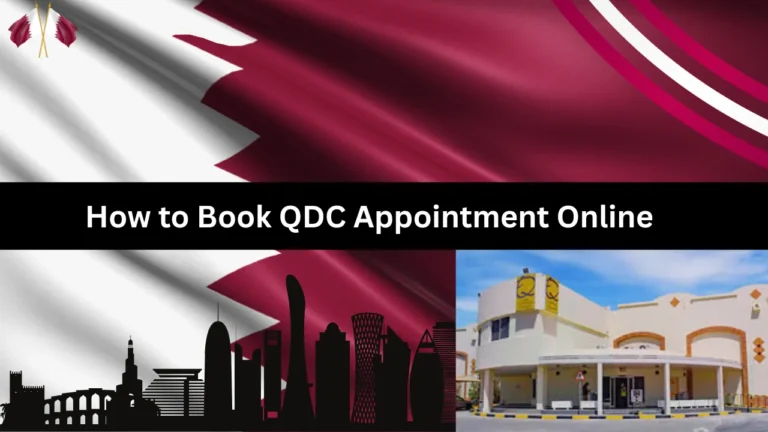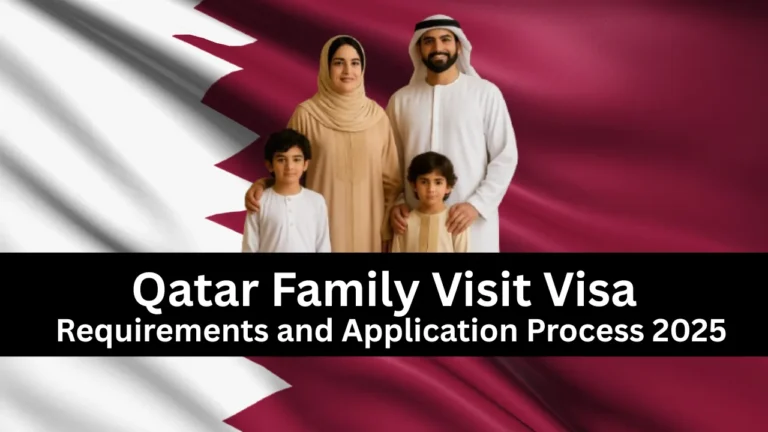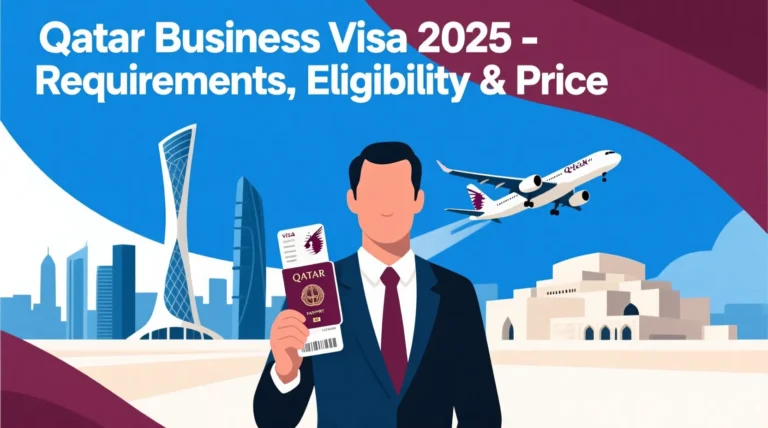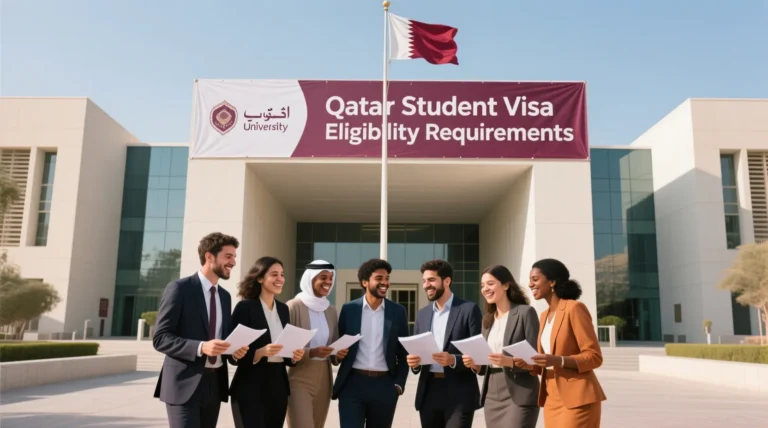Moving to Qatar with your family can be an exciting yet challenging journey. Many residents initially enter the country on a Family Visit Visa, which allows short-term stays, but what if you want a longer, more stable life in Qatar? Converting a Family Visit Visa to Residence opens the door to benefits like access to government services, education for children, and official identification through the Qatar ID system.
Understanding the process can save months of confusion and unnecessary delays. From paying the correct residence visa fees to completing the medical examination and fingerprinting, each step has specific rules enforced by the Ministry of Interior (MOI). This guide walks you through the process in clear, practical terms, helping families make the transition smoothly while avoiding common mistakes.
Understanding Family Visit and Residence Visa
Before diving into the conversion process, it’s important to understand the difference between a Family Visit Visa and a Family Residence Visa in Qatar. A Family Visit Visa is designed for short stays, usually 30 to 90 days, allowing relatives to visit a sponsor living in Qatar. It does not grant long-term residency, access to certain government services, or the ability to enroll children in schools without additional permits.
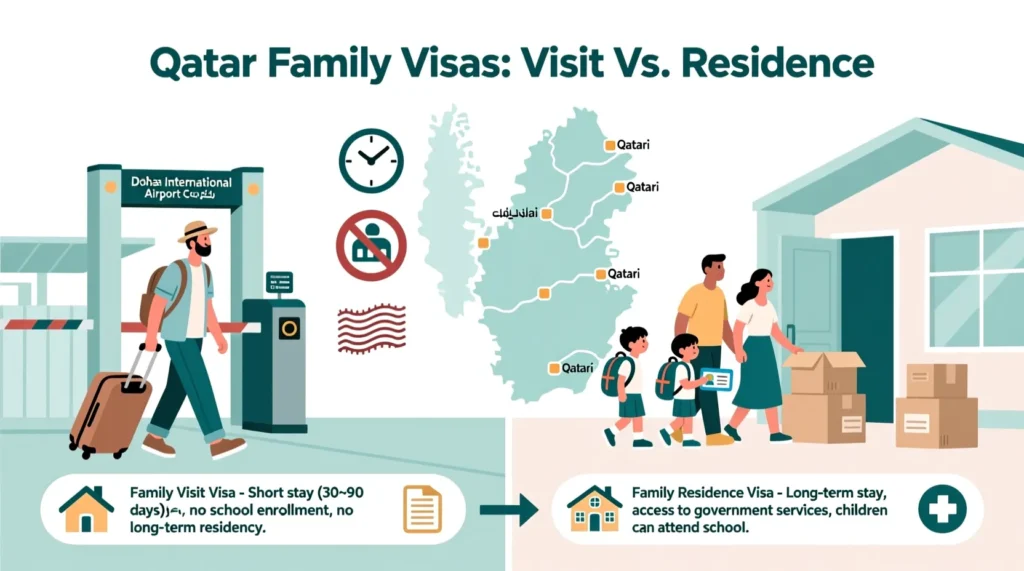
On the other hand, a Family Residence Visa provides long-term legal residency in Qatar. With this visa, family members can obtain a Qatar ID, open bank accounts, enroll children in schools, and access healthcare services seamlessly. The transition from visit to residence visa is not automatic; it requires compliance with rules set by the Ministry of Interior (MOI), along with proof of employment, salary requirements, and health eligibility. Understanding these distinctions helps families plan ahead and avoid unnecessary visa rejections.
Eligibility Criteria for Conversion
Not every family can automatically convert a visit visa into a residence visa. The Qatari authorities have set specific eligibility requirements to ensure that sponsors meet legal and financial obligations. Firstly, the sponsor must hold a valid Qatar Residence Permit and have a stable job in Qatar. The minimum salary requirement, which is periodically updated by the MOI, ensures that families can financially support their dependents.
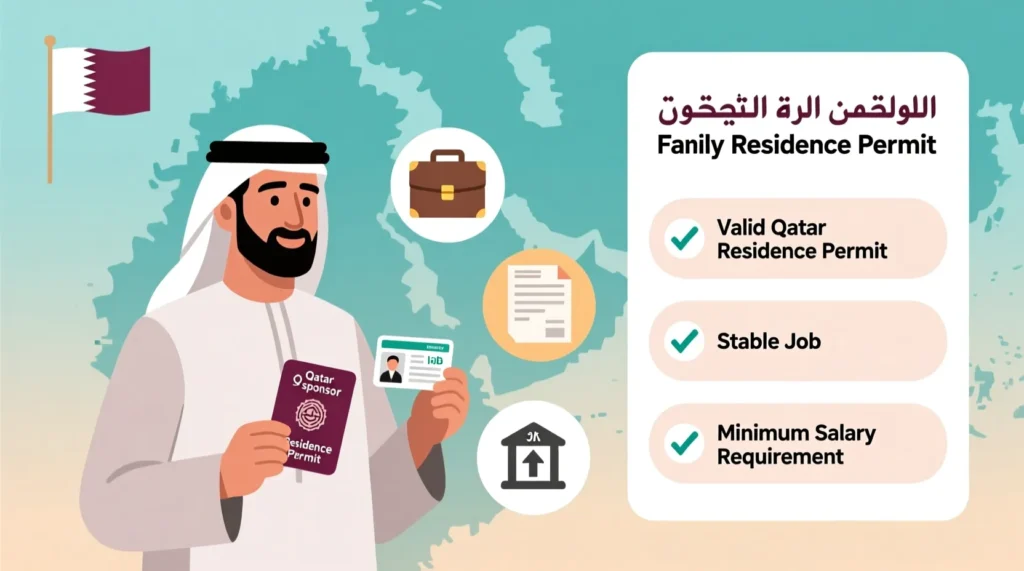
In addition to income, the sponsor’s profession and educational background may influence approval, especially for certain categories of residency. Health is another crucial factor: all applicants must have valid health insurance and pass the mandatory medical examination. Children and elderly dependents may require additional checks. By meeting these criteria in advance, families increase their chances of a smooth visa conversion, avoiding common pitfalls like missing documents or incomplete medical records.
Required Documents for Conversion
A successful conversion largely depends on proper documentation. Every family member included in the application must provide clear copies of their passports and valid visit visa. The sponsor must submit employment letters, salary certificates, and proof of residence in Qatar. Documents from other countries, such as marriage certificates or birth certificates, must be attested and translated by recognized authorities to meet MOI standards.
It’s critical to follow document guidelines carefully. Even small mistakes, like mismatched names or unverified translations, can delay or reject the application. Keeping all paperwork organized and ready before visiting the MOI or using the Metrash2 portal streamlines the process and reduces stress for families navigating the conversion.
Step-by-Step Process to Convert Family Visit Visa to Residence Visa
Converting a Family Visit Visa to a Residence Visa in Qatar requires careful attention to each step. Following the official procedure ensures a smooth transition for all family members. But before moving forward you have to check your Qatar Visa Status Online.
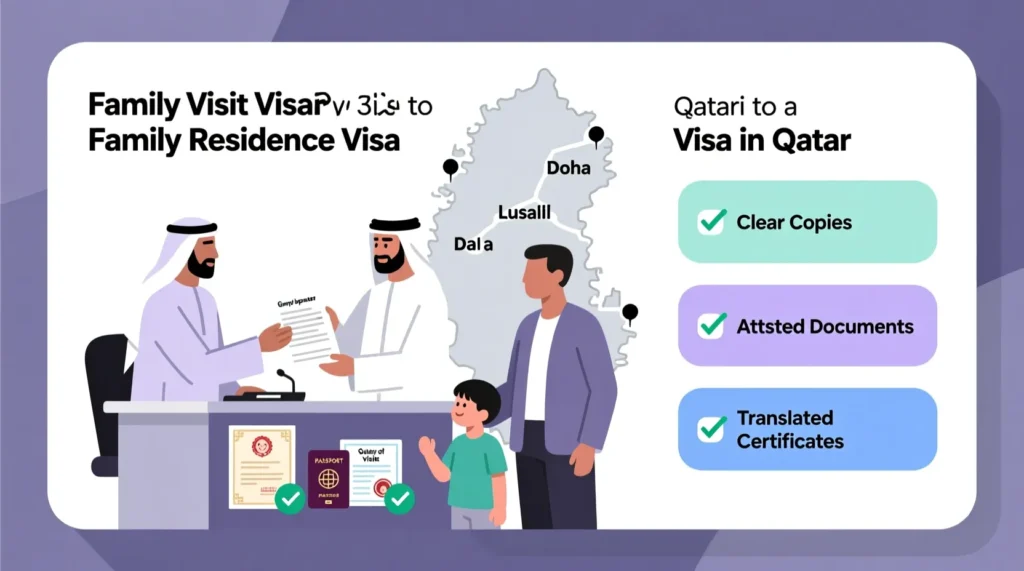
Step 1 – Pay Family Residence Visa Fee
The first step is to pay the Family Residence Visa fee. This can be done online through the Metrash2 portal or at authorized MOI service centers. Fees may vary depending on the number of family members and their age, so it’s essential to check the latest updates from the Ministry of Interior (MOI) before making any payments. Keeping the receipt is important, as it will be required for the next steps in the process.
Step 2 – Change Visa Type
Once the fee is paid, the visa type must be changed from Visit Visa to Residence Visa. There are two options for this:
Option 1: Change Visa Type on Metrash2
The online option through Metrash2 is convenient and saves a trip to the MOI office. Sponsors can submit the required documents, update family information, and track application status digitally.
Option 2: Change Visa Type at MOI Service Centre
For those who prefer a face-to-face approach or have complex cases, visiting an MOI service center is recommended. Officials can verify documents, guide you on missing information, and update the visa type immediately in the system.
Step 3 – Update Medical Test Result
A medical examination is mandatory for all family members converting to a residence visa. This includes blood tests, chest X-rays, and screening for infectious diseases. The results must be submitted to the MOI, either digitally via Metrash2 or in person. Passing this step is critical for approval.
Step 4 – Fingerprints Process
After the medical test, family members aged 18 and above must complete the fingerprinting process. Fingerprints are used to verify identity for the Qatar ID, ensuring security and authenticity. This step is conducted at designated MOI centers and is required for every adult applicant.
Step 5 – Apply for Qatar ID
The final step is applying for the Qatar ID, which serves as the official identification card for residents.
Applying Qatar ID at MOI Service Centre
Applicants can submit biometric data and receive the card in person.
Applying Qatar ID on Metrash2
Digital application through Metrash2 allows tracking and scheduling collection, making the process more convenient.
Fees and Charges
Families should budget for all related costs. The residence visa fee varies by the number of dependents, and there may be additional charges for medical tests, fingerprinting, and Qatar ID issuance. Checking the official MOI fee schedule before starting the process avoids surprises and ensures smoother processing.
Common Issues and Solutions
Even with careful planning, issues can arise. Missing documents, incorrect translations, or mismatched names are common reasons for delays. If the visa is rejected, authorities usually provide a reason, allowing sponsors to correct errors and reapply. Staying organized, double-checking all paperwork, and using Metrash2 for updates helps prevent these problems.
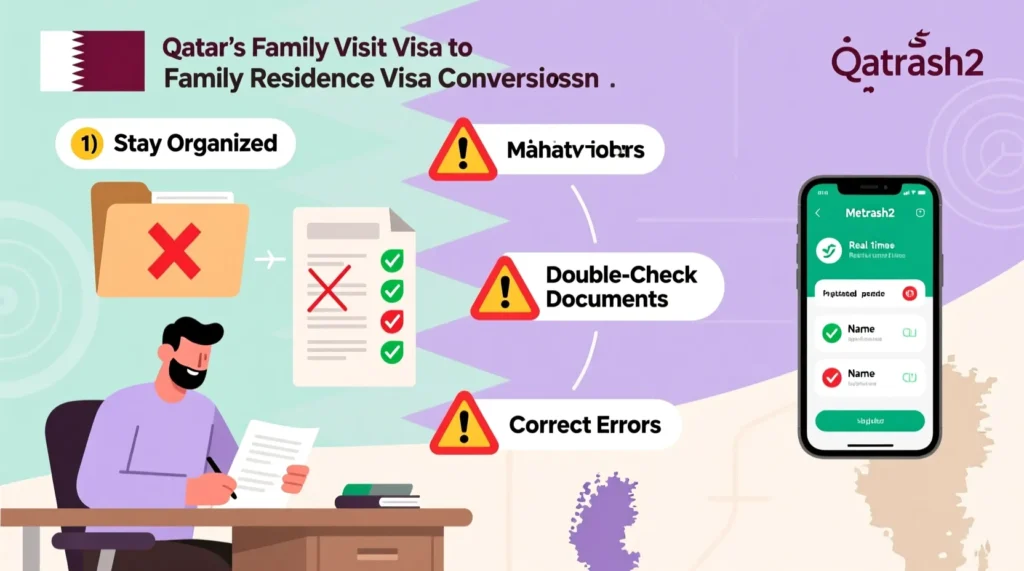
Frequently Asked Questions (FAQs)
How long does the conversion process take?
The process can take anywhere from a few weeks to a couple of months depending on document readiness and medical clearance.
Can I sponsor extended family members?
Yes, but sponsors must meet higher salary thresholds and provide additional documents for extended dependents.
Can the visa be renewed?
Yes, residence visas are renewable, typically every 1-2 years, as long as the sponsor continues to meet eligibility requirements.
Is health insurance required for Family Residence Visa?
Yes, health insurance for all family members is mandatory before the visa is approved.
Conclusion
Converting a Family Visit Visa to a Residence Visa in Qatar requires preparation, attention to detail, and understanding the MOI’s requirements. By following the step-by-step process, submitting all documents correctly, and completing medical and fingerprint procedures, families can secure legal residency efficiently. Proper planning not only speeds up approval but also ensures access to essential services, making life in Qatar more stable and convenient.


